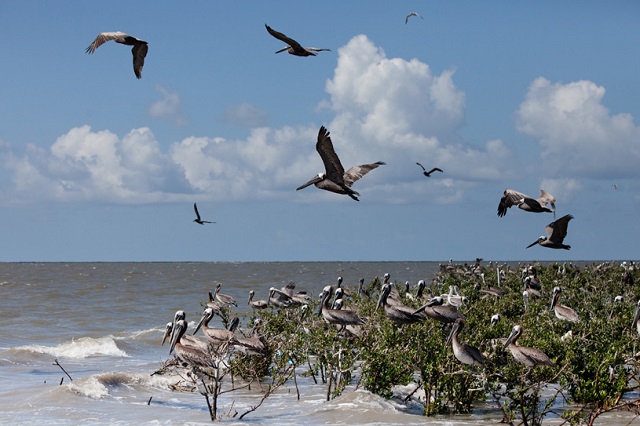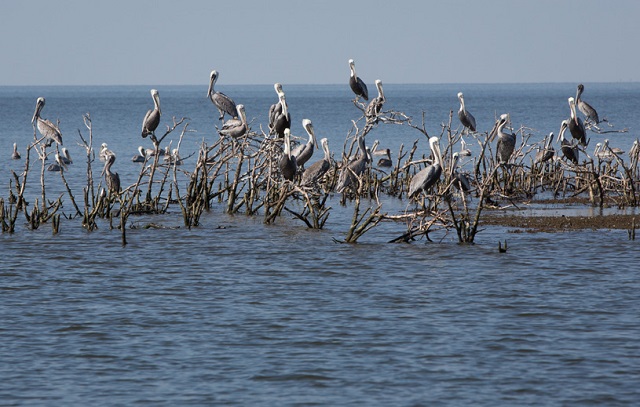
When the news broke that National Geographic was sold to Rupert Murdoch, fans of the magazine gasped.
A magazine known for its photo essays paired with reports often based on scientific research being under the control of an outspoken climate change denier worried them.
As a photojournalist, it is to difficult for me to imagine that the sale of National Geographic to Murdoch won’t contribute to the decline of photojournalism, because it is one of the few publications left whose brand is connected to original, visually-oriented content.
Shortly after the sale was announced, Susan Goldberg, National Geographic’s editor-in-chief, claimed it was a good thing. “It’s great news,” she told the Washington Post. “It’s really a doubling down on our journalism and an investment in our journalism.” She pointed out that the partnership will bring more resources and distribution muscle to National Geographic’s digital and print operations.
However, Jane Goodall, the naturalist with a long relationship with National Geographic, told the Winnipeg Free Press that at first she thought it was a joke. The news left her dumbfounded: “It is unimaginable. National Geographic being owned almost entirely by climate deniers.”
Media Ownership
Six corporations own 90 per cent of the media companies in the US, according to a report by Business Insider. What most Americans read, watch, and listen to is filtered through those corporate interests. And media that isn’t corporate-owned is often corporate-sponsored. National Public Radio, for example, took funding from America’s Natural Gas Alliance, which leads those who oppose fracking to point out how weak NPR’s reporting is on the topic.
“Propaganda by omission is something to watch out for,” Daymon Hartley, former photographer for the Detroit Free Press, told DeSmog. “Now corporations control what you see and what you don’t see. They look through lens of their own ideology and control the message by hiding what it doesn’t want you to see.”
Ownership of the media dictates the tone of editorial content, as well as the allocation of resources to cover stories. Not reporting on a topic can tell us as much about a news source’s stance as the topics it does cover – as do the images we see and don’t see.
At the same time media conglomerates where combining their print, online, and television outlets, individual media sources downsized their staffs of journalists, despite the need to fill 24 hours with streaming news.
Images on the Cheap
Photojournalists are often the first to go. The Chicago Sun eliminated its entire photo staff in 2013. And in January, this year Sports Illustrated let go all of its staff photographers.
The photographs and video that photojournalists created have been replaced with pictures taken by writers with smartphones, images lifted from other web sources (sometimes authorized, other times not), user-submitted content, work commissioned by freelancer photographers, and photos from photo agencies that offer lower and lower prices available by subscription.
Photo editors rely heavily on photo agencies because not only are they faced with a shrinking staff, but also shrinking budgets for freelancers. It is common practice for photo editors to select an image connected to a topic, even if it was shot at a different time or place than the chosen photo is supposed to represent.
For example, The Guardian licensed a photograph from Corbis Images that I shot in 2012 of a barrier island in Louisiana’s Barrataria Bay to illustrate a story about coastal erosion in 2014. The photo shows birds on healthy mangrove trees in a bird rookery.
The report, published on October 14, 2014, makes no mention that the photo was taken in 2012, and gives a false impression of what the island looked like at that time. I reshot the same location for a DeSmog report in the spring of 2013. My photos show by 2013, the island’s mangrove trees were dead. The island written about was in much worse state than the photo used to illustrate the situation.
 Barrier Island in Cat Bay known as Cat Island, June 16, 2012. A photo published by The Guardian in 2014. ©Julie Dermansky
Barrier Island in Cat Bay known as Cat Island, June 16, 2012. A photo published by The Guardian in 2014. ©Julie Dermansky
 Barrier Island in Cat Bay known as Cat Island, September 27, 2013, A photo published by DeSmog in 2013. ©Julie Dermansky
Barrier Island in Cat Bay known as Cat Island, September 27, 2013, A photo published by DeSmog in 2013. ©Julie Dermansky
The Guardian’s choice to use my image taken a couple of years before cost them a tiny fraction of what it would have cost to hire a photojournalist to shoot a new image. Opting not to hire professional photojournalists saves money, but it can cost consumers in terms of quality, authenticity and accuracy.
When Getty Images, the largest source for stock news photos worldwide, was purchased by the Carlyle Group, media critics took notice, but little was written about it. The Carlyle Group is an investment firm that owns a stake in the energy company Kinder Morgan, and in Booz Allen Hamilton, a management consulting firm that counts the US Department of Defense among its clients.
Can Carlyle influence what Getty Images chooses to add to its photo stock? If so, Hartley pointed out, it has the power to control the media by omitting images.
Not only do mainstream media rely on Getty and other stock agencies that offer inexpensive images, alternative media sources, including DeSmog, use stock images, too.
Freelance photojournalists have trouble competing with the low-cost marketplace created by the cheap subscription prices and media’s reliance on free and low-cost images. The rates photojournalists get paid are often the same or lower than they were two decades ago. The World Press Photo Association’s recent survey shows most photojournalists make less than $40k a year.
Experience Lost
It is not unusual for veteran photographers to leave photojournalism behind in order to climb up the economic ladder. Leaving with them is their wealth of knowledge of whatever beat they were covering, and a skill set a photographer just hitting the street won’t have.
Few media consumers are aware of what has been lost. But if you pay attention to the credits under photographs, you will notice many are supplied by Getty and other photo agencies, rather than a staff member or freelancer shooting on behalf of the media source.
“Good enough is good enough today,” award winning photojournalist, Kenneth Jarecke, told DeSmog. “That was not the standard publications were after 15 years ago.”
Photojournalists must adhere to a code of ethics that prohibits them from setting up shots and altering a photograph after the fact. While amateur photographers have nothing at stake if they don’t follow basic photojournalistic guidelines, a professional caught breaking the rules loses his or her professional standing.
“There was a code for photo editors too,” Jarecke said, “A photo editor could loose their job for using images out of context.” But the standards in the industry have dropped so much that for some it is acceptable to publish work found on social media that hasn’t been verified, he explained.
Photographs have the power to raise awareness and impact public policy on a global scale. The image of a drowned three-year-old Syrian refugee washed up on a beach in Turkey by photographer Nilüfer Demir reminded us of that.
There is some truth to the statement, “If it wasn’t photographed, it didn’t happen,” Hartley said.
It is hard for me to believe Murdoch’s outlook won’t influence National Geographic’s content, even though the magazine insists it will retain editorial control.
Will photographs depicting the negative impacts of climate change appear on the pages of a magazine owned by a man who doesn’t believe it is an issue? Time will tell.
But I suggest Murdoch’s purchase of National Geographic serves as a wake-up call to media consumers. People should pay attention to where the images come from.
If no value is given to photojournalists’ work, they might be headed toward the endangered species list, much like the polar bear.
Join us in defending the truth before it’s too late
The future of independent journalism is uncertain, and the consequences of losing it are too grave to ignore. To ensure Truthout remains safe, strong, and free, we need to raise $27,000 in the next 24 hours. Every dollar raised goes directly toward the costs of producing news you can trust.
Please give what you can — because by supporting us with a tax-deductible donation, you’re not just preserving a source of news, you’re helping to safeguard what’s left of our democracy.